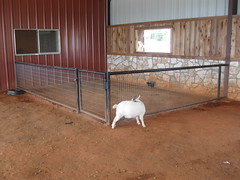Most horse owners will be well aware of Sweet Itch and the myriad of equine health issues that accompanies it.
This being of major concern to a lot of horse owners leads to the following question – exactly what is sweet itch in horses? A useful online resource is available from: http://www.sweetitchtreatment.com.
Sweet Itch is primarily caused by the Culicoides midge, of which there are numerous sub-species. These midges bite into the skin and leave saliva at the site of the wound that, in turn, may induce an allergic reaction in susceptible horses, ponies and donkeys. Indeed, because of its all-embracing nature, the condition is sometimes referred to as equine Sweet itch.
There are numerous blood feeding species of the Culicoides midge. For each species that seek out horses for their next meal usually concentrate their attack on a particular region of the horse’s anatomy. Horses are most vulnerable to bites at the tail head and under the mane. In and around the head, along the dorsal spinal area and the rump are also popular midge bite sites. Other areas of the body that are less susceptible but nevertheless may be inflicted with Sweet Itch are the animal’s underside and legs.
Other insects and flies may bite and induce, or exacerbate already present, symptoms of Sweet Itch.
The black fly of the genus Simulium is closely linked to outbreaks of Sweet Itch. An interesting episode of insect infestation occurred at Blandford in Dorset, United Kingdom during the 1960s and 1970s. The Simulium posticatum species of midge caused rising health concerns. Since then, this species of midge has be known of by the name Blandford fly.
There are also a collection of other insects that are suspected of prompting the autoimmune system to overreact. The more prominent of this collection include horse flies, horn flies, stable flies and mosquitoes. Despite the presence of these other threats, it is acknowledged that the Culicoides midge is the main culprit.
The Culicoides midge multiplies during the Spring and Summer months and its degree of activity is highly dependent upon weather conditions. Identical to all insects, the midge is cold blooded and reaches peak activity with the hottest temperatures. The midge also needs stretches of calm water, boggy areas or, at the very least, moist conditions to complete its life-cycle.
The ideal time of the day for the midges is from dusk to dawn. The ideal conditions are warm with little wind.
There is some good news, though. Many horses never show any symptoms of Sweet Itch . The autoimmune response of each individual animal is different and some do not react to the bite saliva at all.
Many of the propitiatory Deet and Benzyl Benzoate based medications prescribed to keep Sweet Itch in check leave the carer’s hands rough, sore and cracked. Derma Shield – information at http://www.dermashield.co.uk – is a superior quality hand protection mousse lotion that helps prevent this.
We wish every equine owner a sweet itch free summer.

